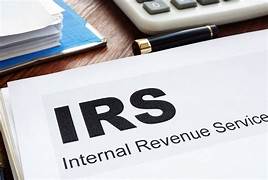
The IRS announced Tuesday in Notice 2024-7 that it will provide about $1 billion in penalty relief to almost 5 million taxpayers who did not receive automated collection reminder notices during the COVID-19 pandemic. It also announced that in calendar year 2024 it will fully resume the normal process of issuing automated reminders for balances due for tax years 2021 and earlier.
Under the penalty relief, the IRS will waive failure-to-pay penalties for eligible taxpayers for tax years 2020 and 2021. The IRS estimates that 5 million tax returns, filed by 4.7 million individuals, businesses, trusts, estates, and tax-exempt organizations, will be eligible for the penalty relief. The penalty relief will automatically apply to taxpayers that received an initial notice of taxes owed but were not sent automated collection reminder notices during the pandemic, IRS Commissioner Danny Werfel said in a call with reporters. Nearly 70% of the individual taxpayers receiving penalty relief have income under $100,000 per year, he said.
“Some people have not received a bill from the IRS for well over a year. These bills arriving may come as a bit of a surprise for some taxpayers,” he said. “And given that penalties and interest continue to accrue under law, the bill amounts for those who weren’t paying will be larger than the last time they received a letter from the IRS for these affected taxpayers. We know this is a tough situation.”
The IRS expects the penalty relief to represent $1 billion in savings to taxpayers, or about $206 per return.
Starting next month, the IRS said, it will issue a special reminder letter that will alert taxpayers of their liability, easy ways to pay, and the amount of penalty relief, if applied. The Service is urging taxpayers who are unable to pay their full balance due to visit IRS.gov/payments to arrange to resolve their bill.
As a first step, the IRS has adjusted eligible individual accounts. It will follow with adjustments to business accounts in late December to early January, and then trusts, estates, and tax-exempt organizations in late February to early March.
Eligible taxpayers who already paid failure-to-pay penalties related to 2020 and 2021 tax years will receive a refund or a credit toward another outstanding tax liability, Werfel said
The penalty relief applies only to eligible taxpayers with assessed tax under $100,000. Eligible taxpayers include individuals, businesses, trusts, estates, and tax-exempt organizations, and estates that filed certain Forms 1040, U.S. Individual Income Tax Return; 1120, U.S. Corporation Income Tax Return; 1041, U.S. Income Tax Return for Estates and Trusts; and 990-T, Exempt Organization Business Income Tax Return, and income tax returns in those series for tax years 2020 or 2021. Eligible taxpayers must also have been in the IRS collection notice process or have been issued an initial balance due notice between Feb. 5, 2022, and Dec. 7, 2023. The IRS notes that the $100,000 limit on assessed taxes applies separately to each return and each entity. The failure-to-pay penalty will resume accruing on April 1, 2024, for taxpayers eligible for relief.
Collection notices resume in 2024
In January, the IRS will resume sending automated collection notices and letters to individuals with tax debts prior to tax year 2022, and businesses, tax-exempt organizations, and estates with tax debts prior to 2023, with exceptions for those with existing debt in multiple years.
Current tax year 2022 individual and third-quarter 2023 business taxpayers began receiving automated collection notices this fall.
The pause in collection mailings affected only follow-up reminder mailings. The IRS did not suspend the mailing of the first, or initial, balance due notices for taxpayers such as CP14 and CP161 notices.


